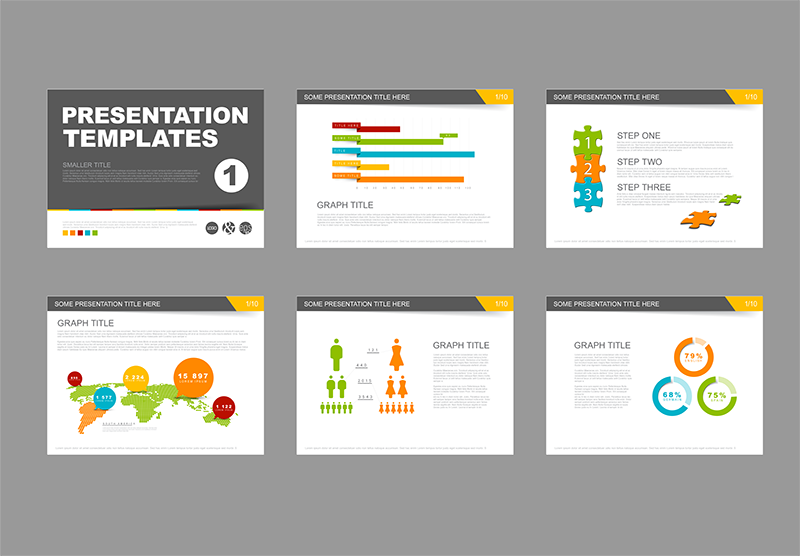PowerPoint is one of the backbones for information communication deployed by businesses and organizations around the globe. In fact, it is estimated that over 500 million people use PowerPoint worldwide. Since information shared via PowerPoint has a global reach, PowerPoint translation is essential to ensure that information is understood clearly in the language of your audience. Let’s explore the benefits of PowerPoint, along with steps you can take to make the translation process more efficient.
The Power in PowerPoint
PowerPoint lives up to its name. From its initial release in 1990 through today, it remains one of the most powerful and widely used presentation tools available. The main benefit of PowerPoint is that it guides its intended audience in an engaging way.
Additional benefits include:
- High quality, easy to apply templates
- Powerful and attractive graphics
- Text formatting capabilities to highlight and reinforce key concepts
- Accessibility of presentations across multiple devices
- Personalized video and audio
- Quick and straightforward editing
- Support for multiple learning modalities
Because PowerPoint offers so many advantages, PowerPoint translation makes sense. Companies and businesses that want to have the most accurate and engaging PowerPoint translations rely on experienced, turnkey translation companies like Interpro for guidance.
Design with translation in mind
Working with translation professionals gives you an edge, and of course we’re here to help. The best way to kick off an effective translation project begins much earlier than when you send files to be quoted on and translated. When you first sit down to create your PowerPoint deck, follow these steps to ensure that your design elements lend themselves to a successfully translated presentation.
Avoid text in graphics
Graphics are one of the most powerful attributes used in designing PowerPoint presentations. Not only do they provide support for visual learners, they also help the audience stay engaged and focused on the topic at hand. When creating your PowerPoint deck, use graphics strategically. Instead of placing text within or over the graphics, use bullets and captions surrounding them. This design tip speeds up the translation process and, as a bonus, keeps your audiences from becoming visually overwhelmed.
Allow for text expansion
No one wants to view a PowerPoint presentation that is all text from top to bottom. Adhering to this design principle also pays off when it comes to PowerPoint translation.
Depending on the language, text expansion often occurs during translation. Meaning: the language you want the text translated into (the target language) requires more space than the original language (the source language). This sometimes happens when translating languages having different alphabets or character sets. Or simply the target language just requires more words than the source language to accurately reflect the meaning.
Regardless, it’s advisable to take this into consideration when laying out your initial PowerPoint content. By leaving more space around the text, translators can easily preserve the original design. Slides will not feel crowded, and it’s less likely that additional slides will have to be added.
Opt for more slides and space
In addition to being strategic with the amount of text used, PowerPoint designers should also think about the number of slides and the amount of space utilized in their presentations. One effective strategy is to use two slides to cover the same amount of content as you might normally put on a single slide. That way, the presentation layout will be preserved during translation. Additionally, this strategy has benefits from a pedagogical standpoint. Audience members will know exactly what information to focus on, without being unnecessarily inundated with content.
PowerPoint translation is all about the details

PowerPoint translation involves much more than just swapping titles and text from one language to another. There are numerous details incorporated in your initial design that our translation professionals can preserve. To help expedite the process, make decisions about these particulars upfront and communicate them clearly.
Graphics and screen captures
Virtually all PowerPoint presentations contain graphics of some kind or another. If you are using text with your graphics that will require translation, it is important to provide source files, allowing for that text to be easily accessed.
More so, screen captures continue to be an increasingly common feature in presentations. Our skilled translation and desktop publishing teams can easily replace the source language screen shots with the localized equivalents. You just need to let us know this is what you want done, and provide us with the target-language screens.
Animation
Another aspect of PowerPoint that boosts audience engagement is animation. Animation helps to make your presentation more dynamic, and the information you are presenting more memorable to your audience. Syncing animation audio and visual with translated content may be a critical piece of the project scope.
If an audio voice-over is included along with translated content, re-syncing these elements may be necessary. By re-syncing, the target language audio will mirror the on-screen animation. Our teams of translation professionals and AV engineers are adept at making this happen seamlessly.
Notes
One of PowerPoint’s most useful features is speaker notes: talking points that are visible on the presenter’s monitor but aren’t visible to the audience. They might include reminders about timing, key points to cover, or other information that compliments the overall presentation. This is especially helpful if multiple speakers are presenting the same information.
If your PowerPoint deck includes notes, you need to decide whether or not to have them translated. If the speaker is presenting in a foreign language, having translated notes allows them to stay focused in one language rather than pivoting back and forth from one language to another.
Links
Especially in cases where PowerPoint presentations are shared electronically with audiences, giving some thought to linked information is important. Many times, on-screen text or speaker notes contains links to external content. You need to consider whether or not this information should be translated (if it is not already available in the target language of the PowerPoint presentation) or left as-is.
If the links are not translated, viewers and students can be supported in another way. Our team suggests translating the phrase “English Only” into the target language and adding that after each hyperlink. This way, viewers will know that when they click the link, the information will be in another language.
Handouts
Presentations traditionally take place in conference rooms, classrooms, and other similar settings. Handouts are the perfect way to extend learning beyond the session itself. If you are including handouts with your PowerPoint presentation, consider having them translated as well. That way, audience members have your information to consult after the event.
Final Thoughts on PowerPoint translation
PowerPoint enables you to get your ideas across visually and engage your audience successfully. Partnering with a professional translation company to make your PowerPoint content available in multiple languages will allow your organization to exponentially extend its global reach.
Incorporating these suggestions during the initial design of your presentation will streamline the entire process, and provide your audience with heightened awareness of the message you are striving to convey.


